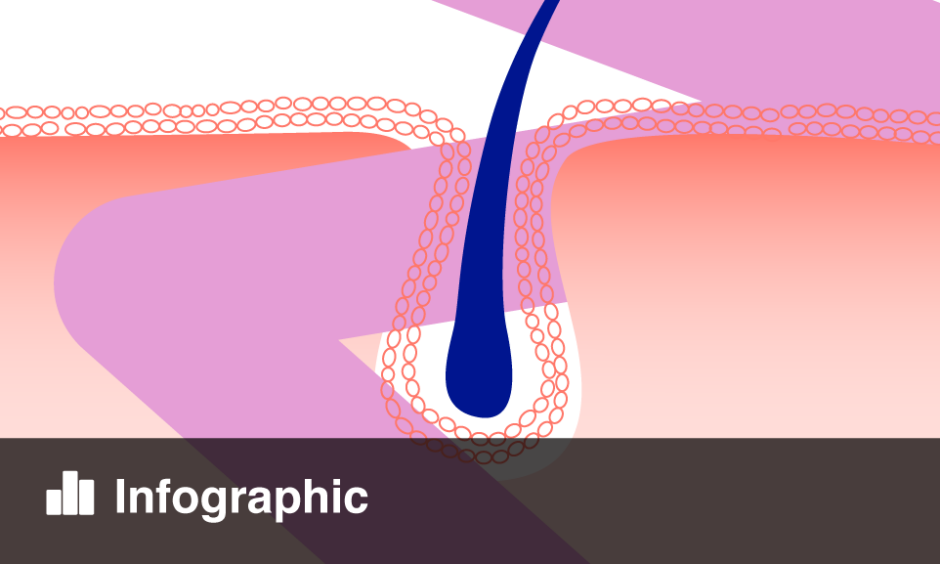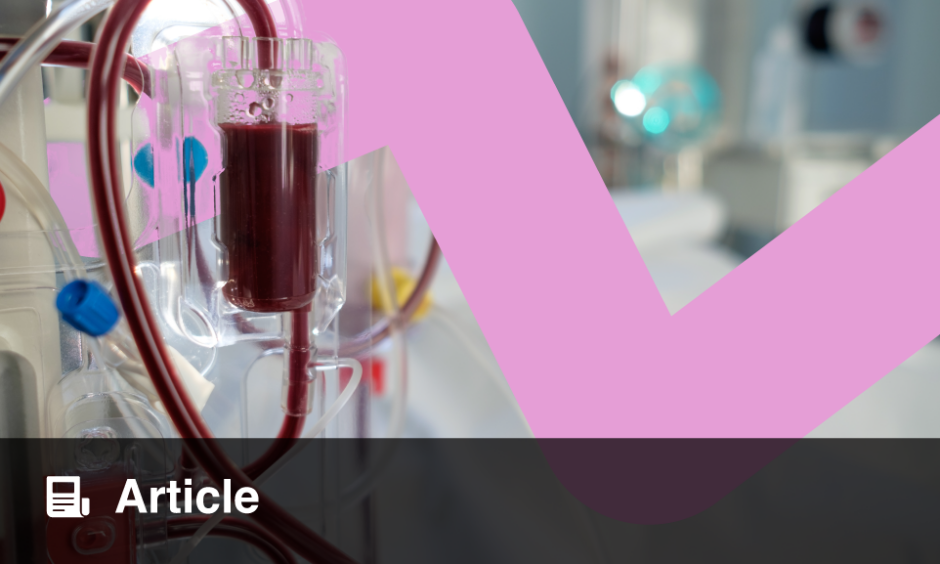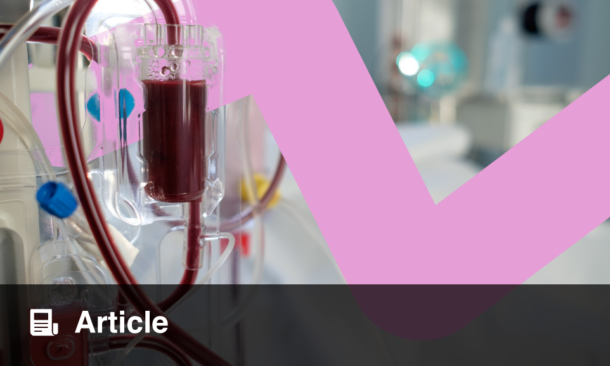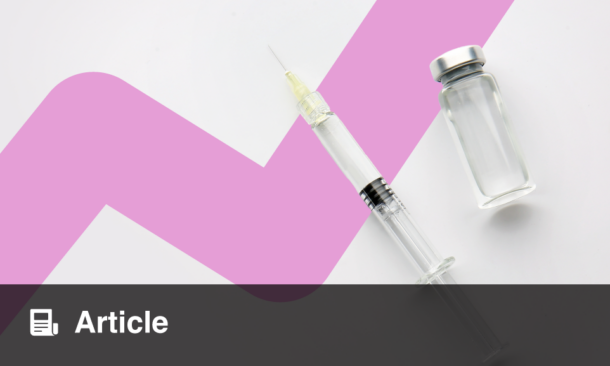Meeting Summary
Prof Elke de Jong focussed her presentation on data from randomised clinical trials (RCT) and real-world evidence (RWE) from psoriasis patient registries. Such data is complementary with RCT having high internal validity but low external validity, and RWE having low internal validity but high external validity. She reviewed the predictors for stopping psoriasis biological treatment of high BMI and female sex and predictors for continuing treatment as concurrent psoriatic arthritis.
Current unmet needs in psoriasis that demonstrate the requirement for additional treatments include patients experiencing psoriasis for roughly 20 years before being prescribed biologics, prevention of damage (e.g., psoriatic arthritis), achieving sustained effectiveness or cure, developing better patient-reported outcome measures, and better treatment of specific psoriatic areas (scalp, face, nails, and genitalia).
Dr Andreas Pinter reviewed the role played by IL-23, IL-17A, and IL-22 in psoriasis, and new agents including ustekinumab blocking both IL-12 and IL-23; guselkumab, tildrakizumab, and risankizumab blocking IL-23; and brodalumab blocking IL-17A.
He explored VOYAGE 1 data that showed that the IL-23 inhibitor guselkumab maintained Psoriasis Area and Severity Index (PASI) 90 response through Week 156 in >80% of patients. Furthermore, VOYAGE 2 results showed PASI 90 response was maintained in >50% of patients 6 months after guselkumab withdrawal.
He demonstrated how re-treatment with guselkumab led to a high PASI 90 response in patients who lost PASI 90 response after withdrawal of treatment. Data from the VOYAGE 1 study further showed that guselkumab produced statistically significant improvements in scalp and palmar plantar scores over adalimumab, and comparable nail scores to adalimumab.
Data from the UltlMMa-1 and ULtlMMa-2 studies showed that IL-23 inhibition with risankizumab produced better quality of life scores than with ustekinumab. Additionally, the ECLIPSE trial showed that IL-23 inhibition with guselkumab produced higher PASI 90 response rates than IL-17 inhibition with secukinumab at Week 48.
From Registry to Practice: Real-World Evidence and Unmet Needs in Psoriasis
Professor Elke de Jong
Photographic images from the Canadian Photographer François Brunelle’s Doppelganger Project (involving unrelated look-alikes who can be mistaken for twins) demonstrates how even though people may appear outwardly the same they can be very different inside.1 The same principle holds for patients enrolled in RCT and registries. Although the two groups can appear superficially the same, those in trials represent a more controlled population while those in registries also include patients who have one or multiple comorbidities or who are older.2
PASI scores are commonly used to assess lesion severity and the area affected by psoriasis. Relative PASI scores, which indicate a percent reduction compared to baseline, are commonly used in randomised clinical trials to illustrate the efficacy of a treatment i.e., PASI 90 represents a 90% reduction of the PASI score compared to the beginning of the trial.3 In the randomised clinical VOYAGE 2 trial, PASI responses for guselkumab were rapid, with >80% of guselkumab patients achieving PASI 75 at Week 24, >70% achieving PASI 90, and >40% achieving PASI 100.4 In contrast, patients in the BioCAPTURE registry (involving a greater diversity of patients with older people, children, and patients with psoriatic arthritis or diabetes) found it harder to achieve PASI 75, PASI 90, and PASI 100 scores, and mean PASI was used as an outcome measure.5
Registries involving large numbers of patients (e.g., PSOLAR, ESPIRIT, and SERENA) have been used to generate safety data. Registries can also explore effectiveness, cost-effectiveness, drug survival, predictors of outcome (e.g., sex, BMI, or age), and biomarkers. Through quality of life and treatment satisfaction data (using Dermatology Life Quality Index [DLQI], 36-Item Short Form Health Survey, and Treatment Satisfaction Questionnaire for Medication [TSQM]), registries reveal the ‘patient voice’ and explore unmet needs and dose reductions.
A systematic overview of 14 long-term psoriasis patient registries revealed that registries most frequently consider effectiveness/efficacy/outcomes (9 registries), followed by baseline descriptions (8 registries), and safety (7 registries).6 Subjects less frequently addressed included treatment patterns (2 registries), drug survival (4 registries), predictor analyses (4 registries), and registry descriptions (5 registries). Furthermore, the overview showed the most common outcome measure instrument used was PASI, followed by DLQI.6
Data derived from RCT and RWE are complementary, with both included in guidelines. RCT have high internal validity (in which the analysis is well done) but low external validity (data may not transfer to broader patient groups). In contrast, RWE has low internal validity (because of lack of randomisation) but high external validity (i.e., the data is applicable to clinical practice).7 Insights from registries show effectiveness is reached in daily practice, but with higher doses than in trials, or in combination with other psoriasis therapies.8 Regarding effectiveness, registries show switching between biologics is safe and effective but dosage increases and combinations with other systemic treatments might be needed (opinion of the speaker). Regarding safety, psoriasis treatments are safer than expected, with patients stopping because of side effects less often than the lack of efficacy. Furthermore, strict laboratory controls have proved less necessary than expected, leading to the adjustment of guidelines (opinion of the speaker). For patient-reported outcomes, registries reveal patient quality of life increases substantially on biologics as does treatment satisfaction measured on the TSQM.9
For psoriasis, the proportion of patients on a drug decreases (from the lack of efficacy, side effects, or patients lost to follow-up), until around 2 years when less than half of the original cohort are still on the drug (information provided by the speaker). However, unpublished data from the BioCAPTURE registry exploring treatment durations up to 12.5 years revealed that ustekinumab had the highest drug survival, with adalimumab in second place, and etanercept in third.5 Drug survival of biologics for psoriasis represents a composite measure taking into consideration effectiveness and safety as well as physician and patient behaviour. The BioCAPTURE registry revealed that the most frequent reason for stopping treatment was its sub-effectiveness, rather than its side effects.10
A meta-analysis of RWE, including 37 studies involving 32,631 subjects, demonstrated that ustekinumab had the highest 4-year drug survival, dropping from 82% at Year 1 to 56% at Year 4.11 This is compared to etanercept, dropping from 66% at Year 1 to 41% at Year 4, adalimumab from 69% at Year 1 to 47% at Year 4, and infliximab from 61% at Year 1 to 42% at Year 4.11 For etanercept, low drug survival was largely attributable to sub-effectiveness, while for infliximab it was largely because of side effects, allowing clinicians to use such data for treatment choices.11
A literature review, involving 16 cohort studies including 32,194 patients, found that biological treatment discontinuation was predicted by obesity (hazard ratio [HR]: 1.21; 95% confidence interval [CI]: 1.10–1.32) and female sex (HR: 1.22; 95% CI: 1.07–1.38), while persistence was predicted by psoriatic arthritis (HR: 0.83; 95% CI: 0.80-0.86).12 In summary, predictors for stopping biologic treatments are a high BMI10,12 and female sex,10,12 and a predictor for continuing is psoriatic arthritis.12 Furthermore, an observational cohort study assessing drug survival of second-line biologics found female sex, multiple comorbidities, concomitant cyclosporine, and high PASI at switching to second-line biologics all predict discontinuation.13
Biomarkers can predict treatment response,14 toxicity, or progression (opinion of the speaker). A known factor is that psoriasis is a marker for psoriatic arthritis,15 with patients developing psoriatic arthritis 10 years after the onset of psoriasis.16 One recent study suggested allele HLA-Cw6 represents a predictor of ustekinumab efficacy,14 but a confounder is that HLA-Cw6 negative patients can also show good ustekinumab responses. In the future, biomarker profiles might predict whether patients would benefit most from adalimumab, etanercept, or ustekinumab.
A study introducing the ‘happy’ drug survival concept combined drug survival with dermatological quality of life measures for 186 patients taking adalimumab, etanercept, or ustekinumab (with happy defined as DLQI ≤5; unhappy defined as DLQI >5).17 At baseline, 73% of patients were considered unhappy, and 27% happy (happy:unhappy ratio 1:27); while at 1 year, 79% of patients reported being happy on their drug (happy:unhappy ratio 3.7:1.0).17
Current unmet needs in psoriasis that demonstrate the requirement for additional treatments include patients experiencing psoriasis for 18–20 years before being prescribed biologics,18 prevention of damage (e.g., psoriatic arthritis), achieving sustained effectiveness or cure, developing better patient-reported outcome measures, and better treatment of specific psoriatic areas (scalp, face, nails, genitalia) (opinion of the speaker).
Regarding damage prevention, psoriasis remains the best marker for psoriatic arthritis,15 demonstrating the need for early detection through screening and rheumatology referrals for early treatment. Young adults represent the population with the greatest number of new patients,19 with psoriasis onset often coinciding with life events such as studying and finding a job or partner. Questions remain around whether patients should be over-treated or under-treated, with updosing effective in some patients (depending on BMI and other factors) (opinion of the speaker).
The controlled dose reduction (CONDOR) study is currently randomising 120 patients with stable plaque psoriasis and low disease activity in combination with good dermatological quality of life included in BioCAPTURE network hospitals taking adalimumab, etanercept, or ustekinumab to either usual care or tight controlled biologics dose reduction.20 Preliminary results (unpublished) showed that >50% of patients who underwent dose reductions experienced ‘good effects without serious adverse events or an increase in psoriasis activity’, suggesting dose reduction to be possible.
The BioCAPTURE registry, involving 700 patients in a Netherlands network of 3 academic centres and 14 regional hospitals, is exploring the unmet needs of psoriasis patients.21 In a recent, unpublished analysis focussing on patients who started a biologic (etanercept, adalimumab, ustekinumab, secukinumab, ixekizumab, guselkumab, brodalumab, or apremilast) between 2017 and 2018 (involving 219 treatment episodes) looked at PASI, quality of life, and TSQM. Results at 1 year showed that the mean PASI was 4. Furthermore, results showed that after 6 months, 35.2% of patients had PASI 75, and 21.7% had PASI 90; while after 1 year, 35.1% of patients had PASI 75 and 10.8% PASI 90. These far from ideal results may be because of patients having to stop biologic administration due to infections and other comorbidities.
In the same study, the mean DLQI 12 months after starting a biologic is around 5. TSQM is divided into four domains: at 1 year, the mean TSQM for effectiveness was 69.6; for side effects it was 93.1; for convenience it was 77.8; and for global satisfaction it was 76.5. All domains fall short of the ideal result of 100, with the greatest room for improvement in effectiveness. The BioCAPTURE registry demonstrates that psoriasis clearance is not yet a reality for most patients.
The sentiment that therapies may not be good for all patients and of the need to choose between different therapies was highlighted by the recent US National Psoriasis Foundation (NPF) magazine cover headline “One size does not fit all”.
From Trial to Practice: Key Trial Data and Long-Term IL-23 Inhibition Doctor
Doctor Andreas Pinter
Understanding of psoriasis pathophysiology has evolved from hyperproliferation of skin cells (prior to 1980) and involvement of T cells (1982), to recognition of IL-23 (including the p19 and p40 subunits) and IL-17 as the most important cytokines in classic plaque psoriasis.23 However, there have been delays between the understanding of cytokine involvement to development of psoriasis treatments, with the first selective IL-23 (p19) blocker approved in 2017,24 and trials ongoing for p19 subunit inhibitors.25
IL-23 plays a central role in psoriasis pathogenesis, with dendritic cell-derived IL-23 and downstream helper T cells products (including IL-17A and IL-22) considered to be important.26 Treatment possibilities include ustekinumab blocking both IL-12 and IL-23; guselkumab, tildrakizumab, and risankizumab blocking IL-23; and brodalumab blocking IL-17A. Questions remain around whether these treatments are a good choice for patients and whether their results are comparable.
For psoriasis, treatment goals have evolved from achieving PASI 50 with conventional therapy to PASI 75 with first-generation biologics (anti-IL-12/23 antibodies and anti-TNF antibodies), to PASI 90 plus Physician’s Global Assessment with second-generation biologics (anti-IL-17A antibodies), to long-lasting clear skin with third-generation (anti-IL-23 antibodies) (opinion of the speaker).
Dr Pinter shared a case of a 57-year-old woman from his clinic who had experienced psoriasis from the age of 5 years (whose grandmother also had psoriasis). The patient, whose previous therapies included extensive topical therapy, fumaric ester acid, methotrexate, cyclosporine, psoralen and ultraviolet A (PUVA), apremilast, and adalimumab, was treated with guselkumab. In March 2018, prior to guselkumab, she had a PASI of 29 and body surface area (BSA) involvement of 42%. In April 2018, 4 weeks after starting guselkumab, her PASI was 9 and BSA involvement was 36%; in July 2018, 16 weeks after initiating treatment, her PASI was 0 and BSA involvement was 0%.
In the reSURFACE 1 trial data for tildrakizumab (a high-affinity, humanised IgG1 k antibody targeting IL-23 p19), at Week 12 the PASI 75 response treatment goal was achieved in 62% of patients taking tildrakizumab 200 mg, 64% taking tildrakizumab 100 mg, and 6% taking placebo (p<0.0001 for comparisons of both tildrakizumab groups versus placebo).25 Furthermore, by Week 28, PASI 75 response was achieved in 77% taking tildrakizumab 100 mg and 79% taking tildrakizumab 200 mg. At Week 12, PASI 90 was achieved in 35% taking tildrakizumab 100 mg, 35% taking tildrakizumab 200 mg, and 3% taking placebo. By Week 28, 49% of patients taking tildrakizumab 100 mg and 57% taking tildrakizumab 200 mg achieved PASI 90.25
In the VOYAGE 1 study, patients with moderate-to-severe psoriasis were randomised to guselkumab 100 mg (Weeks 0 and 4, then every 8 weeks; n=329), placebo then switch to guselkumab (with guselkumab 100 mg at Weeks 16, 20, then every 8 weeks; n=174), or adalimumab (every other week; n=334). Results at Week 48 showed that PASI 75 was achieved in 96.4% of patients receiving placebo then switching to guselkumab, 87.8% receiving guselkumab, and 62.6% receiving adalimumab; PASI 90 was achieved in 81.8% receiving placebo then switching to guselkumab, 76.3% receiving guselkumab, and 47.9% receiving adalimumab; and PASI 100 was achieved in 50.3% receiving placebo then switching to guselkumab, 47.4% receiving guselkumab, and 23.4% receiving adalimumab.27
The UltIMMa-1 study of risankizumab (a humanised IgG1 monoclonal antibody binding to the p19 subunit of IL-23) found that at Week 52, PASI 90 was achieved in 82% of patients randomised to risankizumab, 78% randomised to placebo then switching to risankizumab, and 44% randomised to ustekinumab.28 At 52 weeks, the ULtIMMa-2 study found that PASI 90 was achieved in 85% of patients randomised to placebo then switching to risankizumab, 81% to risankizumab, and 51% to ustekinumab.28
The VOYAGE 1 study showed PASI 90 response was maintained through Week 156 in >80% of patients treated with guselkumab, and that PASI 100 response was maintained through to Week 156 in >50% of patients treated with guselkumab.29
Further analysis of VOYAGE 1, showed that at Week 52, 49.1% of patients receiving guselkumab had a PASI score of 0 and 64.3% had a score ≤1; at Week 100, 51.1% had a PASI score of 0 and 68.8% a score ≤1; and at Week 156, 50.8% of patients had a PASI score of 0 and 68.4% had a score ≤1.30
In the VOYAGE 2 study, patients were randomised to guselkumab 100 mg (Weeks 0 and 4, then every 8 weeks; n=496), placebo then switching to guselkumab (placebo Weeks 0, 4, and 12, then guselkumab at Weeks 16 and 20; n=248), or adalimumab (80 mg at Week 0, then 40 mg at Week 1, and every 2 weeks through to Week 23; n=248). At Week 28, guselkumab PASI ≥90 responders were re-randomised to guselkumab (n=193) or placebo (n=182), with guselkumab after loss of response. Furthermore, placebo then switching to guselkumab responders and adalimumab responders received placebo, then guselkumab after loss of response, and non-responders received guselkumab.4 Results for guselkumab-treated patients re-randomised at Week 28 (receiving their last injection at Week 20) showed that a PASI 90 response was maintained in >50% of patients 6 months after guselkumab withdrawal.4 The ability to maintain PASI 90 some months after coming off treatment is a finding that is unique to the newer generation of p19 IL-23 blockers (opinion of the speaker).
Stopping and restarting therapy is far from ideal because the practice increases the risk of developing neutralising antidrug antibodies.31 A study exploring VOYAGE 2 patients who lost response after guselkumab withdrawal found that the majority regained PASI 90 response 6 months after re-treatment (PASI 90 was achieved in 20.0% of patients at 1 month and 87.6% at 6 months).32
An analysis of VOYAGE 2 showed at 48 weeks following guselkumab withdrawal, parameters predicting PASI 90 maintenance were lower than baseline IL-17F and shorter disease durations. The analysis further found that 6 months after withdrawal, parameters associated with PASI 90 maintenance were lower BMI at baseline, complete skin clearance at Week 28, and higher guselkumab concentrations at Week 28.33
One analysis using VOYAGE 1 data to explore specific body regions found that at Week 24, 84.5% of patients receiving guselkumab showed improvements in scalp scores versus 69.2% receiving adalimumab (p<0.001), 49.8% receiving guselkumab showed improvements in nail scores versus 49.4% receiving adalimumab (not significant), and 78.9% receiving guselkumab showed improvements in palmar plantar scores versus 56.8% receiving adalimumab (p<0.0001).27 While adalimumab has been considered the first choice for nail involvement, it is noteworthy that guselkumab achieves the same effects (opinion of the speaker).
A second case from Dr Pinter’s practice was presented: a 50-year-old male psoriasis patient with moderate palmoplantar involvement whose previous therapies included high-potency topical steroids, PUVA, re-PUVA, methotrexate, and secukinumab. In March 2018, prior to starting guselkumab, the Patient’s Psoriasis Global Assessment (PPGA) was 3, but in May 2018 (after 2 months guselkumab) his PPGA was 0, demonstrating complete clearance of palmoplantar involvement.
PASI scores can be hard to understand, with patients more interested in the Psoriasis Symptom and Sign Diary, which numerically rates, from 0–10, five symptom items (itch, pain, stinging, burning, and skin tightness) and six patient-observable signs (skin dryness, crackling, scaling, shedding or flaking, redness, and bleeding),34 and the DLQI, a 10-item questionnaire assessing six different aspects affecting disease specific health-related quality of life.35
In VOYAGE 1, the proportion of patients taking guselkumab achieving symptom-free status for Weeks 76 and 156 were 49.0% and 50.0%, respectively, for itch; 77.0% and 75.5% for pain; 76.9% and 74.7% for stinging symptoms; 79.0% and 76.0% for burning sensation; and 61.4% and 59.5% for skin tightness.36 Results for observable sign items showed the proportion who were sign-free for Weeks 76 and 156 were 39.5% and 40.8%, respectively, for skin dryness; 72.6% and 69.9 % for cracking; 53.0% and 52.1% for scaling; 56.4% and 51.1% for shedding or flaking; 54.5 % and 54.0% for redness; and 87.7% and 87.8% for bleeding.36
An analysis of UltlMMa-1 and UltlMMa-2 studies in patients with moderate-to-severe chronic plaque psoriasis found that at Week 16, the percentage of patients achieving DLQI scores 0 or 1 for risankizumab was 66% in UltlMMa-1 and 67% for UltlMMa-2, for ustekinumab was 43% for UltlMMa-1 and 46% for UltlMMa-2, and for placebo was 8% for UltlMMa-1 and 4% for UltlMMa-2.28
At Week 52, DLQI scores 0 or 1 were achieved for 75% of patients taking risankizumab in UltlMMa-1 and 71% taking risankizumab in UltlMMa-2, for ustekinumab was 47% in UltlMMa-1 and 44% in UltlMMa-2, and for placebo then switching to risankizumab was 62% in UltlMMa-1 and 68% in UltlMMa-2.28 Such results demonstrated risankizumab delivered better DLQI 0/1 than ustekinumab.28 Furthermore, the frequency of treatment-emergent adverse events in UltMMa-1 and UltlMMa-2 trials were similar across risankizumab, placebo, ustekinumab, and placebo then switching to risankizumab.28 Such data provide reassurance of no new safety signals for the next generation of selective IL-23 blockers.
In the ECLIPSE trial, 1,048 patients with severe plaque psoriasis were randomised to receive either guselkumab (subcutaneous injection at baseline, Weeks 4 and 12, then once every 8 weeks [n=534]) or a pair of 150 mg secukinumab (300 mg dose total) subcutaneous injections (at baseline, Weeks 1–4, then once every 4 weeks [n=514]).37
Results showed that at Week 48, 84.5% of patients treated with guselkumab achieved PASI 90 compared to 70.0% of those treated with secukinumab (p<0.001). The treatment difference was 14.2%.
For secondary endpoints of PASI 75 response at Week 12 and Week 48, guselkumab demonstrated non-inferiority when compared with secukinumab (84.6% versus 80.2%; p<0.001). Due to the ‘hierarchical’ analysis, the subsequent five secondary endpoints could not be answered with a p-value. Regarding adverse events, 77.9% of patients receiving guselkumab reported at least one adverse event versus 81.6% receiving secukinumab, and serious adverse events occurred in 6.2% receiving guselkumab versus 7.2% receiving secukinumab.
Audience Questions
The first audience question concerned whether it was possible to extract information regarding age, sex, and comorbidities from registries to inform individual treatments for patients. Prof de Jong answered that individualised predictors were currently unavailable, but that in the future it might be possible to set individualised patient goals by using questionnaires to identify the outcomes people wanted.
The second question commented on the complacency of prescribers ‘happy’ with PASI 5 results, adding that such results were because of reluctance among patients and prescribers to switch treatments. Prof de Jong felt that the reluctance was due to the uncertainty surrounding new treatments, with the setting of treatment goals enabling people to switch. Dr Pinter added that prescribers should consider switching patients with PASI 4.
Considering the question of how to choose between different IL-23 inhibitors, Dr Pinter said that some were prescribed every 8 weeks and others every 12 weeks. There will be a need, he added, for registry data to explore how patients who had been pre-treated with other medications fare on guselkumab.
EM-16832








